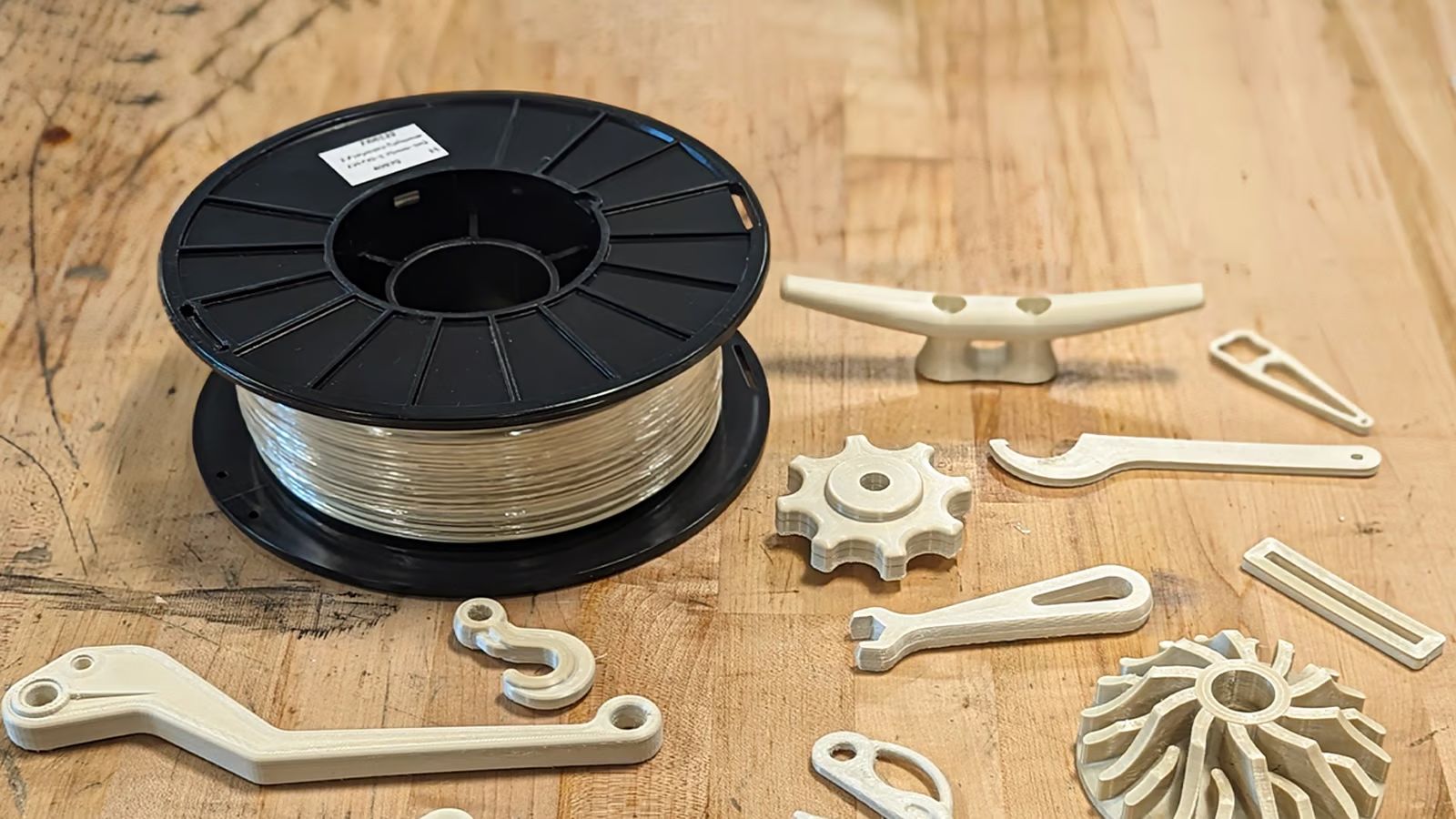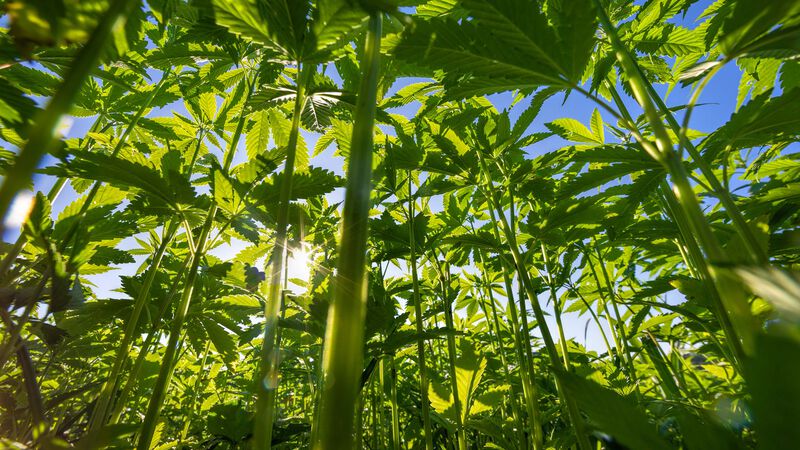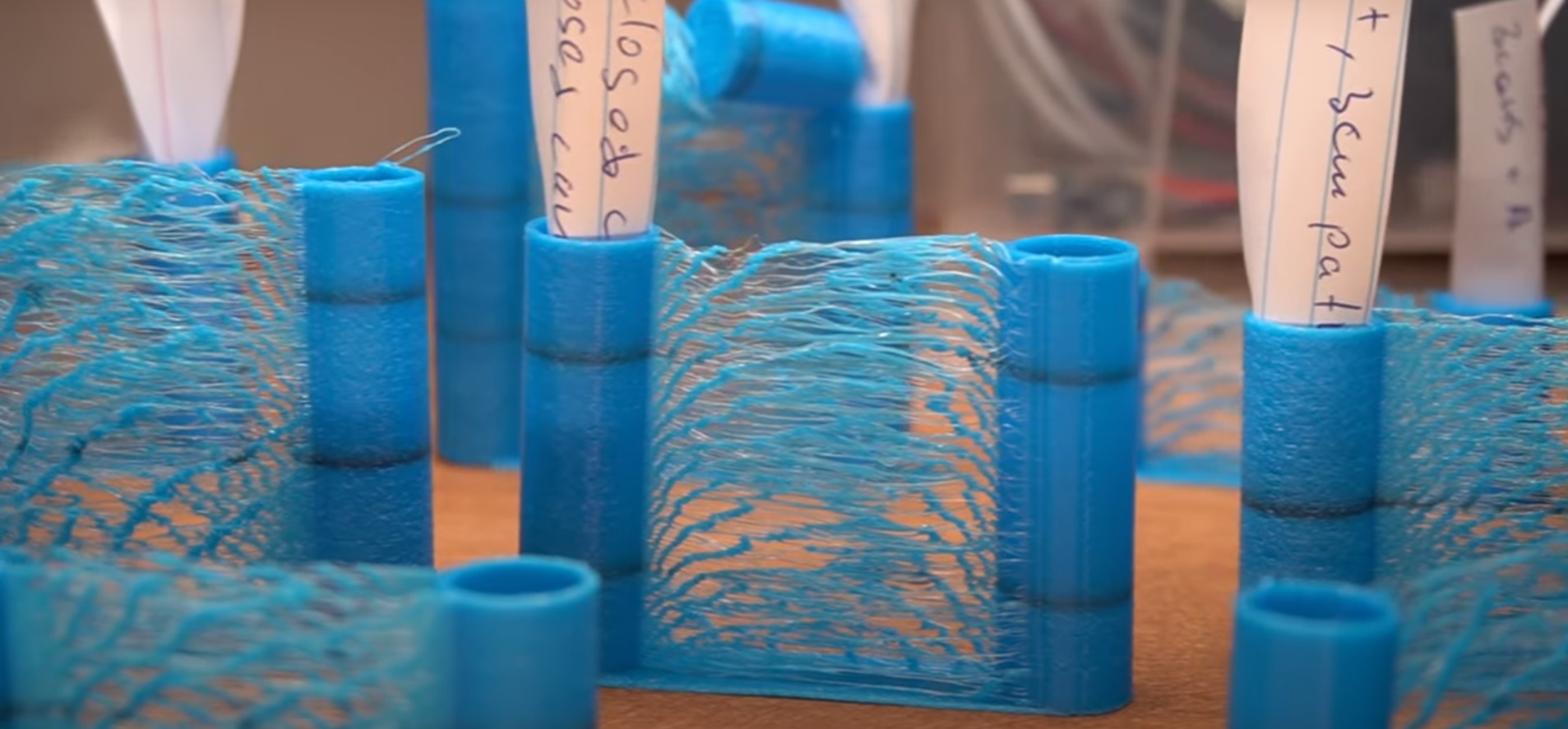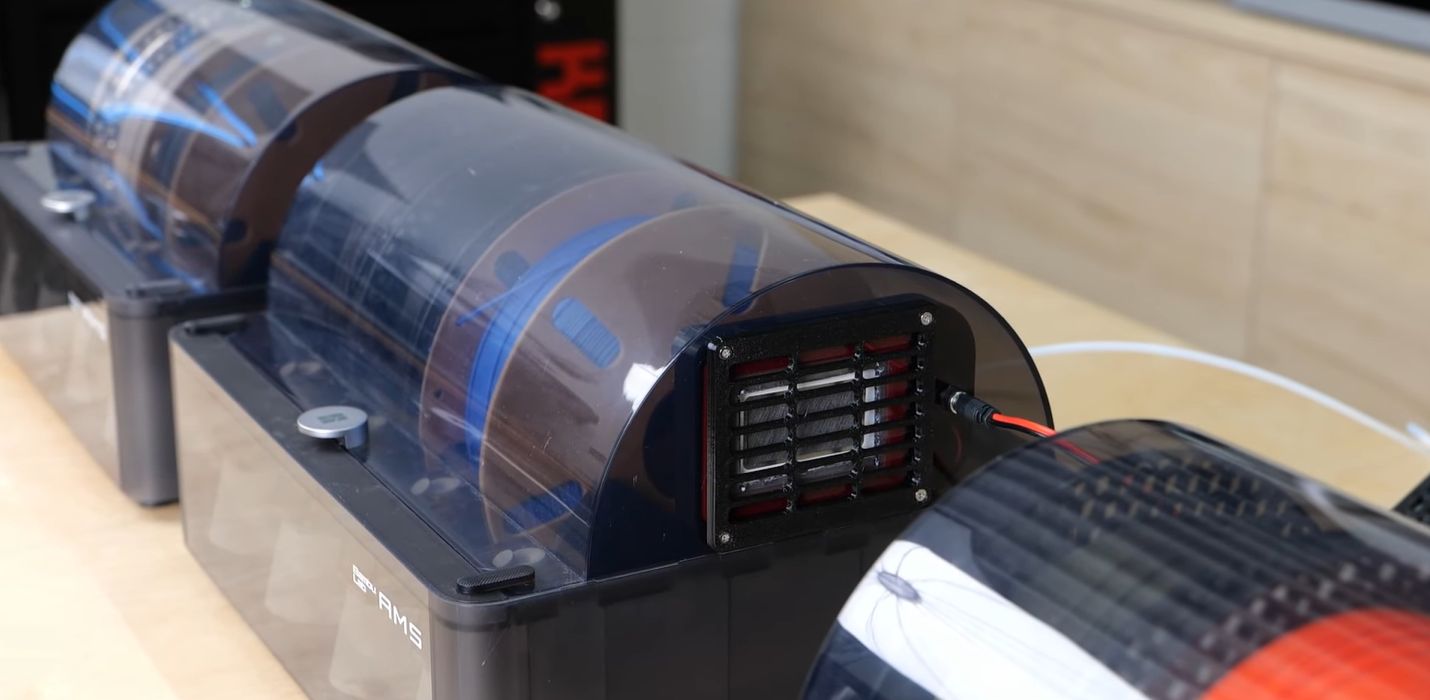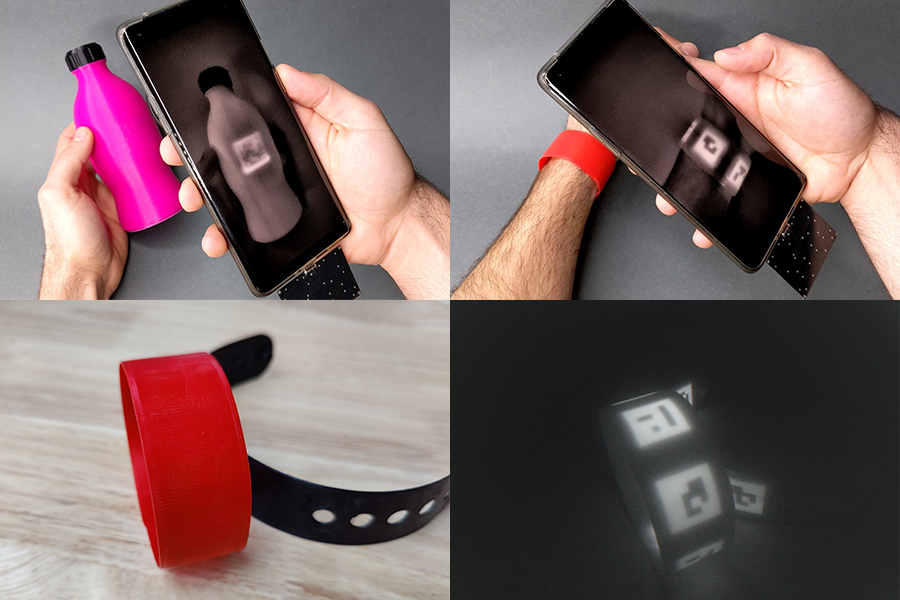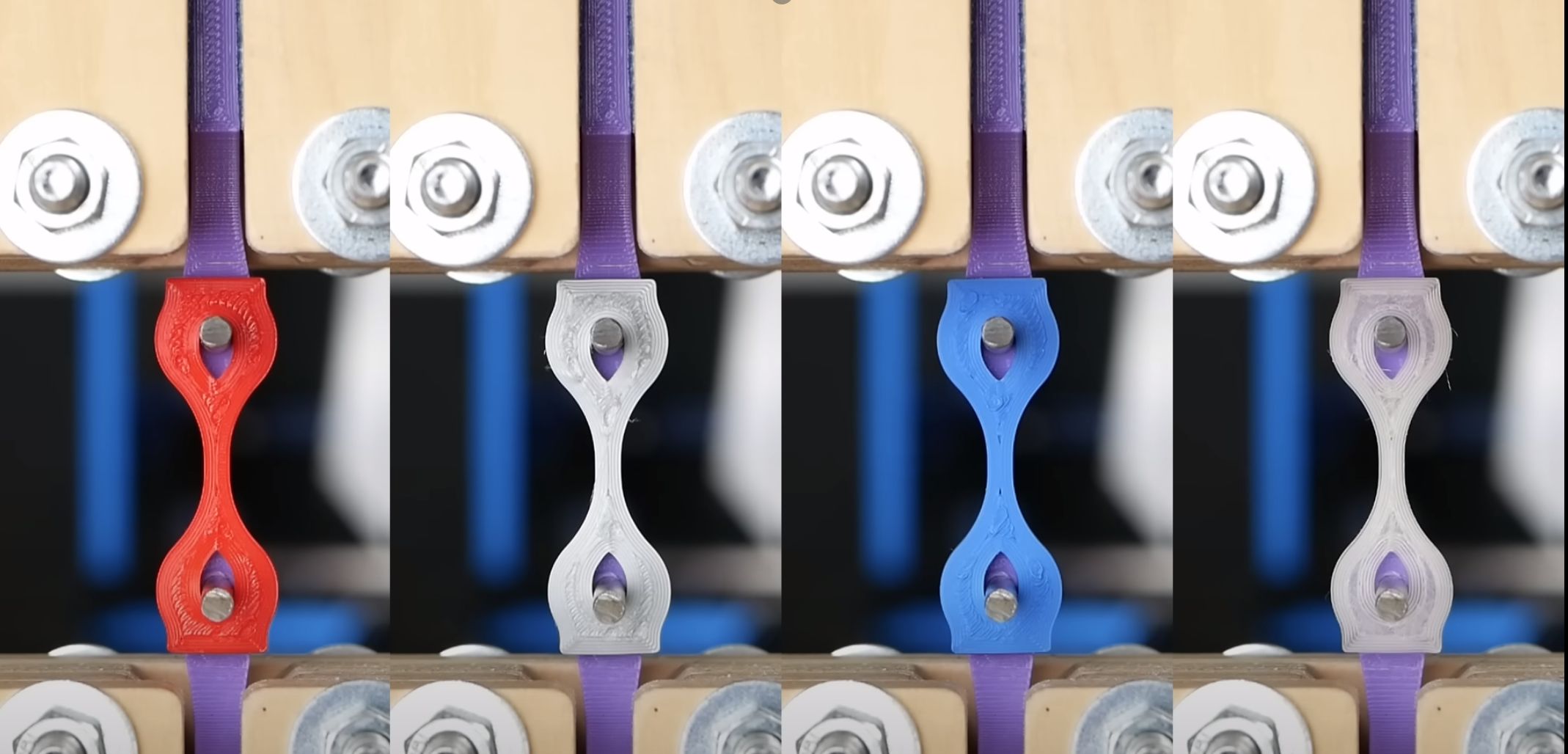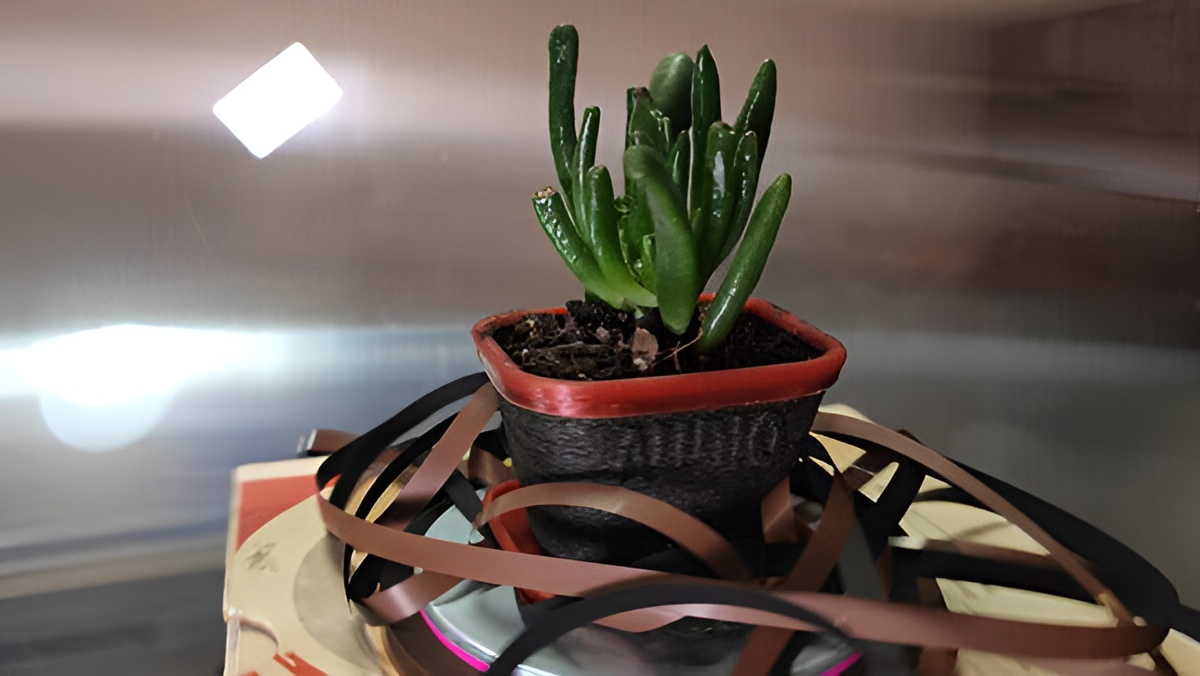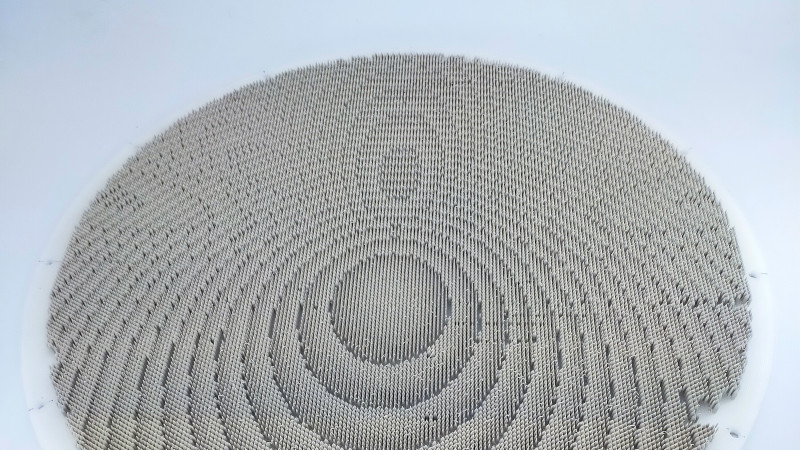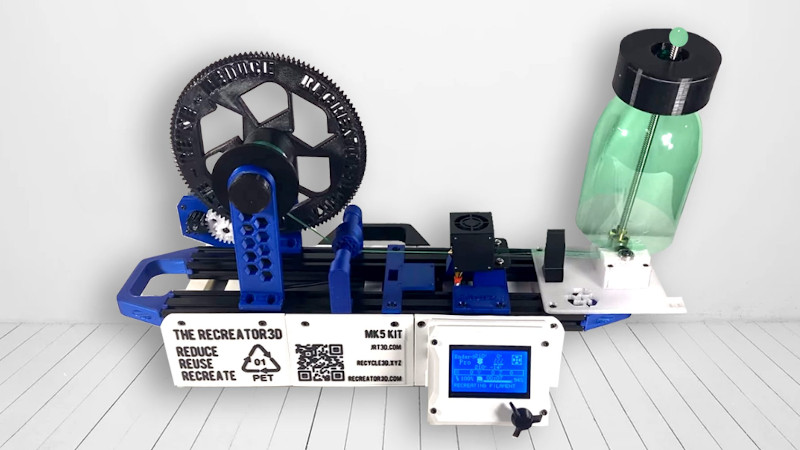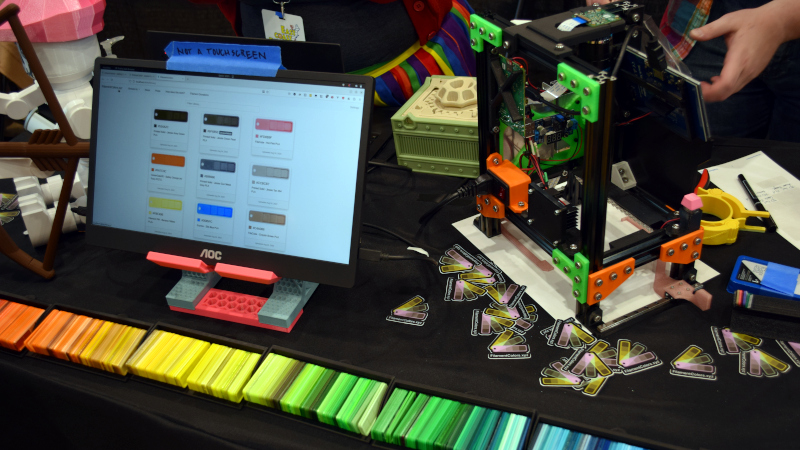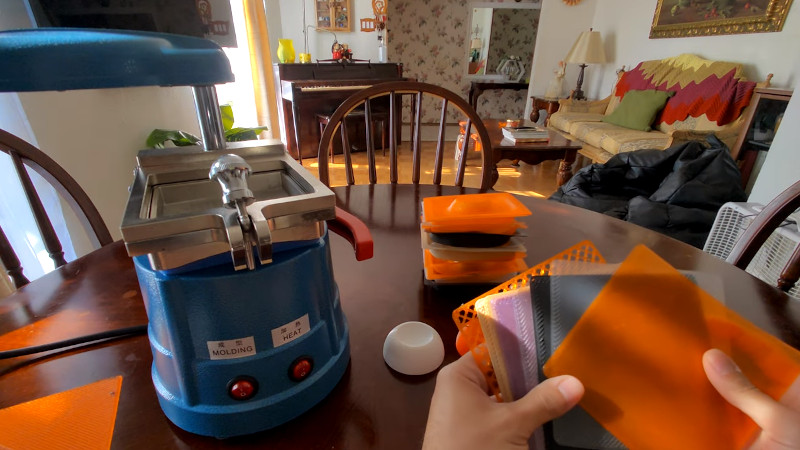2 Likes
#3dprinterfilament
2 Likes
3 Likes
1 Shares
One person like that
2 Likes
3 Likes
2 Likes
One person like that
1 Comments
One person like that
One person like that
3 Likes
PetBot: Turn PET bottles Into Filament
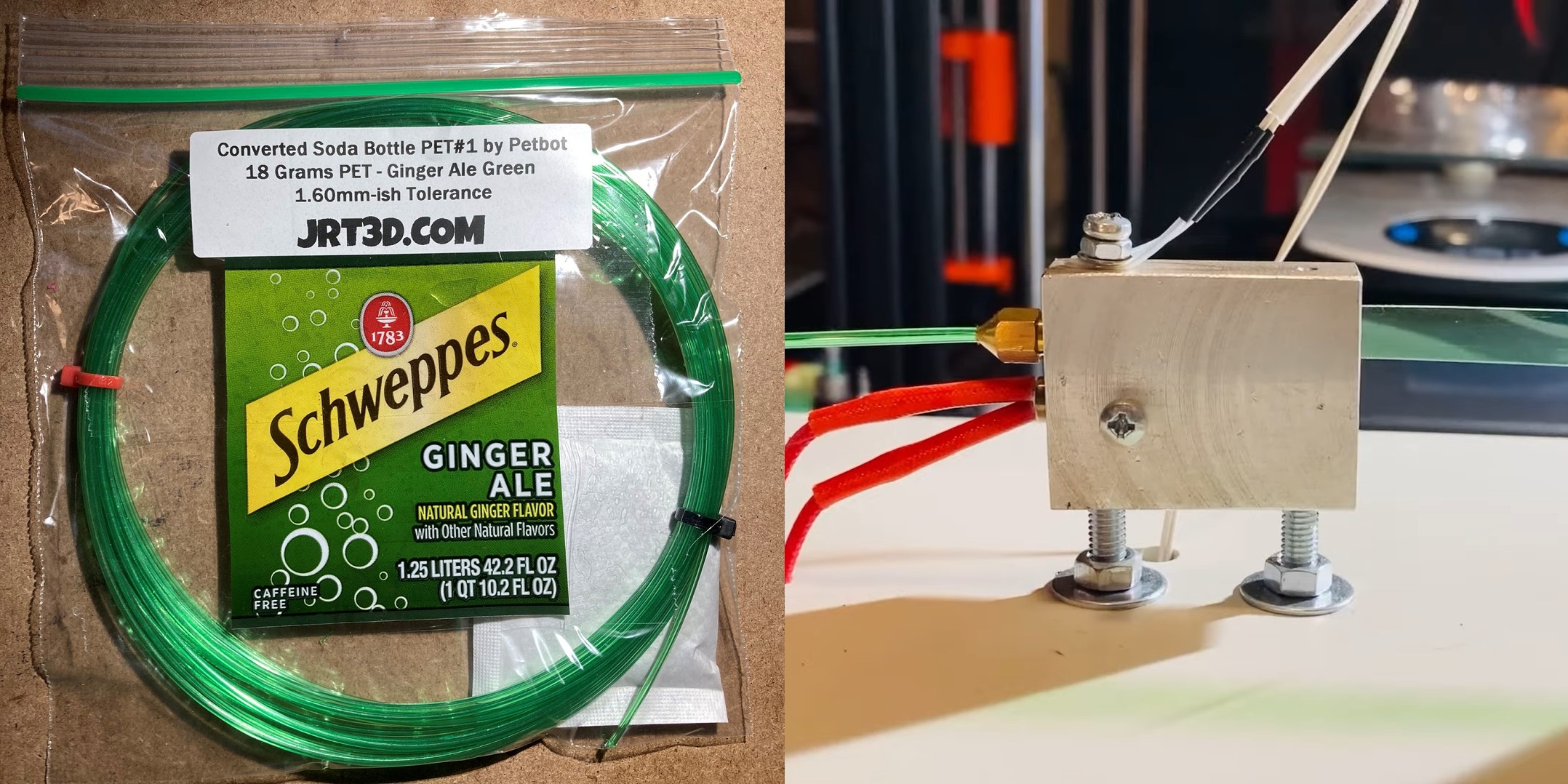

Recycling plastic into filament normally involves chopping it into tiny pieces and pushing it through a screw extruder. [JRT3D] is taking a different approach with PetBot, which cuts PET bottles into tape and then turns it into filament. See the videos after the break.
Cutting the tape and extrusion happens in two completely separated processes on the same machine. A PET bottle is prepared by cutting off the bottom, and the open rim is pushed between a pair of bearings, where a cutter slices the bottle into one long strip, as a driven spool rolls it up. The spool of tape is then moved to the second stage of the machine, which pulls the tape through a hot end very similar to that on a 3D printer. While most conventional extruders push the plastic through a nozzle with a screw, the PetBot only heats up the tape to slightly above its glass transition temperature, which allows the driven spool to slowly pull it through the nozzle without breaking. A fan cools the filament just before it goes onto the spool. The same stepper motor is used for both stages of the process.
We like the simplicity of this machine compared to a conventional screw extruder, but it's not without trade-offs. Firstly is the limitation of the filament length by the material in a single bottle. Getting longer lengths would involve fusing the tape after cutting, or the filament after extrusion, which is not as simple as it might seem. The process would likely be limited to large soda bottle with smooth exterior surfaces to allow the thickness and width of the tape to be as consistent as possible. We are curious to see the consistency of the filaments shape and diameter, and how sensitive it is to variations in the thickness and width of the tape. That being said, as long as you understand the limitations of the machine, we do not doubt that it can be useful.
It doesn't look like PetBot is open source at the moment, but if you don't want to figure out how to build it yourself, you can buy one for $400. [JRT3D] also says there is a crowdfunding campaign in the works.
We've seen several DIY filament extrusion machines over the years, but if your primary goal is to save on filament costs they might not be worth the trouble. A 3D printer that can use plastic pellets is likely a better way to do that.
Using my Petbot, PET Bottle Converter…making that PET filament! Recycle! Ginger Ale Green :) pic.twitter.com/5eyURrBjeJ
-- Joshua R. Taylor - JRT3D (@joshuartaylor) June 26, 2021
#3dprinterhacks #3dprinterfilament #filamentextruder #petplastic
3 Shares
